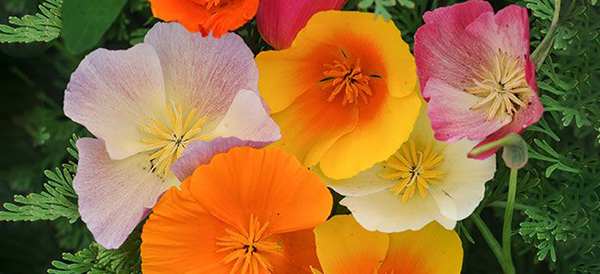
California Poppy
California Poppy (Eschscholzia californica) is one of eleven species in the Eschscholzia or Poppy genus. Depending on how it is grown, it is either an herbaceous, hardy annual or a perennial with very deep roots. This poppy is also known as California Sunlight, Golden Poppy, and Cup of Gold. It is also the Californian state flower.
Although there is some disagreement among botanists, the general feeling seems to be that there are two subspecies – one with four varieties – and, as this poppy has become so popular with gardeners, there are also many variants and a multitude of cultivars.
The History of California Poppy
Not surprisingly, Native Americans were the first to discover and take advantage of the health benefits of this plant. Various tribes in the California region used Eschscholzia californica as a sedative / a calming agent, a sleep aid, and to relieve the pain associated with headache and toothache.
There are reports of crushed seeds and root-based remedies used both topically and internally for cleansing and pain easing purposes. The 1918 version of the US Formulary specifically recognizes the value of this poppy in relation to anxiety and insomnia. More recently it has been reported that this plant also assists cells in the body to make use of nutrients more efficiently and effectively.
Where This Plant Is Found
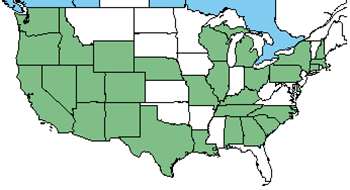 This specific poppy is native to the US and Mexico. As the name implies, its origins lie in California. However, the original range is extensive: southern Washington through into Baja, California, east into the Great Basin and parts of the Sonoran Desert, and west of the mountains and in the Mojave Desert.
This specific poppy is native to the US and Mexico. As the name implies, its origins lie in California. However, the original range is extensive: southern Washington through into Baja, California, east into the Great Basin and parts of the Sonoran Desert, and west of the mountains and in the Mojave Desert.
While the number of California Poppies in some areas of the US has been significantly reduced, it is still found in abundance in other areas and protected habitats. One reason for this poppy’s success is that it can thrive at altitudes ranging from sea level up to 8,000 feet or 2,500 meters.
Outside of the US, Eschscholzia californica has been introduced and naturalized in India, Chile, Europe, Argentina, South Africa, and Australia. Unfortunately, this plant has been classed as a weed and as undesirable as it is toxic to animals and invades grazing lands.
Related: The Complete Map of Edible Plants: Find Out What You Have in Your Area! (Video)
How to Identify California Poppy
The California Poppy blooms in the summer. Mature plants reach a height of 2 feet / 61 centimeters. These bushy, vigorous plants spread to approximately 1 foot / 30 centimeters.
Like several other summer-blooming and sun-loving plants, the flowers open in response to light and close on dull or cloudy periods and at night.
Specific identifying features are outlined below.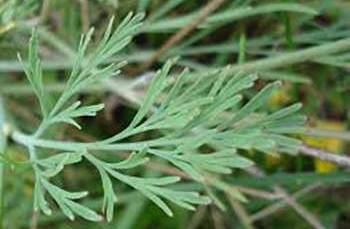
- Leaf: The leaves are blue-green, smooth, alternate branching, lacy, and pinnate (multiple leaflets that frow from a single stem).

- Stem: The hairless stems have a thin layer of wax covering them.
- This makes the stems look slightly blue.
- Fruit: When the flower goes to seed, it forms a thin, cylindrical, ridged capsule that sits above a flat, circular platform.
When they are ready, the capsule bursts in two, and the tiny, round seeds are ejected as far as up to 6 feet / 1.8 meters from the parent plant.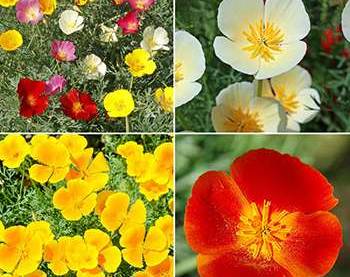
- Flower: The blooms are cup-shaped and light yellow to bright orange are the most common colors.
However, there may also be red or pink ones. Buds have a ‘cap’ over them which pops off when the bloom is ready to open.
Each flower is borne on a separate stalk or stem and has four, silky, long, broad petals. the flowering season runs from late spring through to early fall. 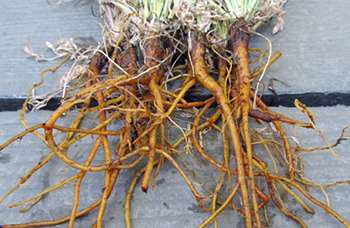
- Root: The nature of the root varies depending on the altitude and type of location the plant is growing in. generally, California Poppies form orange, fleshy taproots.
Several of the features, particularly the color, help to distinguish the California Poppy from the many other members of the poppy family.
How to Grow California Poppy
Eschscholzia californica is easy to cultivate and grow in both flower beds and containers. Once these plants are happily established in full sun and in sandy or loamy soil, they will self-seed… perhaps more than some gardeners would like! The soil they are planted in, in addition to being well-drained, should be pH neutral or alkaline. To plant seeds:
- Moisten the soil you will be planting in
- Make shallow furrows about 6 inches / 15 cm apart with a stick or your finger

- Scatter the tiny seeds as thinly as you can into the furrows
- Cover the seeds with soil to a depth of 0.2 inches / ½ cm
- Water extremely gently so the seeds are not washed away or exposed
- Keep seeds moist until they germinate
- Thin seedlings out when they reach 1 ½ inches / 4 cm and again at 3 inches / 8 cm in height
- Keep the seedlings 6 inches / 15 cm apart so they have space to grow.
Get Your Own California Poppy Seeds, Last 30 Packs Left
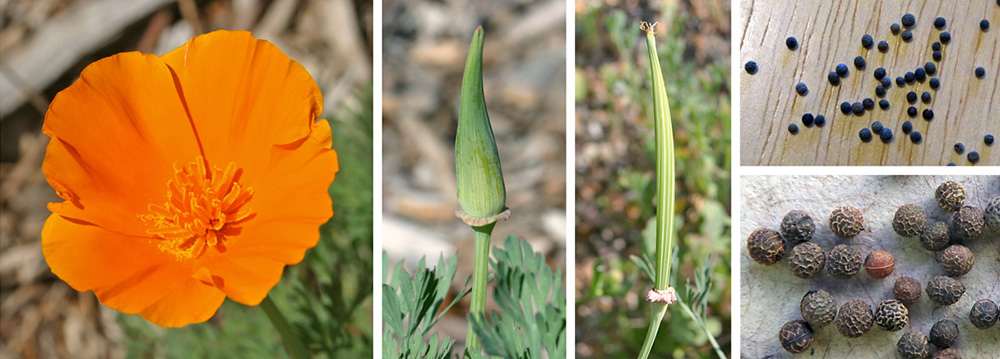
Thereafter minimal care is necessary. If you are not harvesting to use the flowers and leaves in remedies, you can deadhead and then trim the plants back when the flowering season is over. As added advantages, California Poppies are drought tolerant and, as a rule, pest- and disease-free.
It should be noted that cultivars may not be the same color etc. after reseeding.
How to Harvest This Plant
Plants are best harvested in the morning after morning dews have evaporated and before it gets too hot. These plants become more bitter as the weather gets hotter and they get older. Unless you are okay with that, rather harvest early in the season while the plants are young and tender.
If you are picking in the wild avoid areas such as roadsides where there is the possibility of high levels of soil and air pollutants that will, in turn, contaminate the plant. It should be noted that it’s illegal to pick or harvest these poppies in California on any land that you don’t own.
You have several options depending on what plant part you want: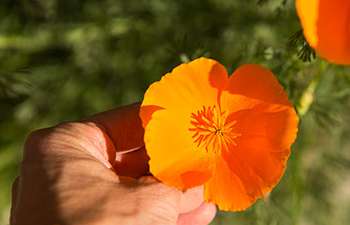
- If you only want the leaves you can cut these at any time when the plant is young. Remember, though, that you may reduce the number of blooms – or prevent flowering altogether – if you remove stems, or too many stems before buds have been able to form.
- Flowers should be harvested just as they have opened and are in full bloom.

- Seeds can be harvested when the petals drop off and the seed pod has become visible. Place the pods into a labeled paper bag or suitable container or the seeds will be lost when the pods open and eject them.
Leaves and flowers should be gently rinsed after harvesting and then laid out on a cloth or drying rack in a warm, well-ventilated area. Turn the plant material regularly so that all of it is exposed to the air and dries thoroughly. If it doesn’t, there is a high risk of mildew and mold forming. Once 100% dry, store leaves and/or flowers in airtight containers.
What California Poppy is Good For
It is thought that the primary active ingredients in California Poppy that provide health benefits are:
- Isoquinoline alkaloids (californidine, eschscholtzine, and protopine): have sedative effects that help to calm and ease insomnia
- Flavone glycosides (such as rutin): tone blood vessels and reduce inflammation.
What is problematic is that there is quite a lot of conflicting information available. However, the one point of agreement appears to be that Eschscholzia californica does offer sedative benefits.
Despite the lack of clinical evidence, this plant is included in remedies used to:
- Ease insomnia, including in children

- Soothe pain and aches
- Lower anxiety levels
- Promote relaxation
- Ease the symptoms of bladder infections
- Boost energy levels
- Act as a tonic for the nervous system.
It should be noted that while there are remedies and products that are made entirely from California Poppy, this plant is often combined with others to boost efficacy and widen the range of applications.
California Poppy Seeds: Last Minute Deal
What Parts of The Plant Are Used in Remedies?
The parts of the California Poppy that grow above the ground are used for herbal and natural remedy purposes. In addition, seeds are a popular addition in some food dishes and for baking.
A DIY California Poppy Recipe
The most popular DIY recipe when it comes to this plant is undoubtedly tea. It is most often used to calm nerves, reduce anxiety, promote sleep, or ease headaches. This tea doesn’t only have multiple uses… it is also easy to make.
Ingredients
- 1 heaped teaspoon of dried California Poppy
- 1 cup of water
If you use fresh plant material, you will need to use 1 heaped tablespoon. You can use a mixture of leaves, flowers, and small stems.
Method
- Place the poppy in a cup
- Pour boiling water over the plant material

- Cover the cup to retain heat
- Leave the tea to steep or draw for up to 20 minutes (naturally, the longer you leave it the stronger it will be)

- Strain the liquid into a clean cup or mug.

Some people find this tea bitter. If you do, you can use a sweetener of your choices such as honey or stevia. You could also experiment with other flavors such as ginger or something sweeter such as mint. You can enjoy up to three cups of this tea daily.
Dosage
How much you use is impacted by personal factors such as state of health / current medical conditions and age. Moreover, because of the lack of clinical research with California Poppy, it is not surprising that there is no general data about doses.
The general guidelines, though, are straightforward. Firstly, follow the directions of your healthcare practitioner. Secondly, follow the manufacturer’s instructions on products that you purchase.
How to Preserve This Plant
In summer you can rely on having plenty of plant material to meet your needs. You can lay in stocks for winter too by either drying or tincturing the above-ground plant parts.
Drying
Rinse the harvested plant material or shake off any debris. Spread the flowers and leaves out on a drying rack or suitable cloth.
Keep the layer as thin as possible and move the material around so that everything is exposed to the air. Leave them to dry in a warm, well-ventilated area until they are dry and crunchy to the touch.
The dried material should be stored in an airtight container. It should last for up to 6 months. However, if you notice a change in smell or color, or see any signs of mold or mildew, throw it away immediately.
Tincturing
The alcohol acts as a preservative and tincture should be good for up to 18 months, but if you notice a change in color, smell, or taste you should probably get rid of it.
What Plants Resemble California Poppy?
It’s unlikely that you would confuse a California Poppy with other types of poppy; the color alone is a strong and easy identifier. However, there are several plants that may be confused with Eschscholzia californica:
| Feature | California Poppy Eschscholzia californica | Prairie Poppy Mallow Callirhoe alcaeoides | Satin Flower Clarkia amoena | Windflower Anemone coronaria |
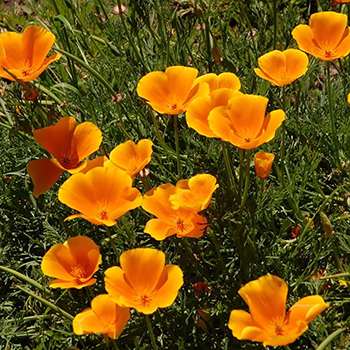 |
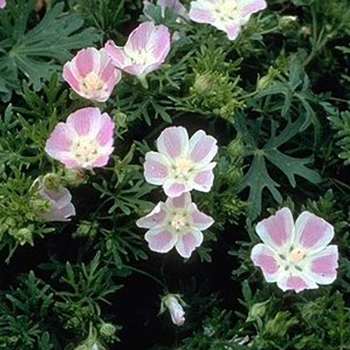 |
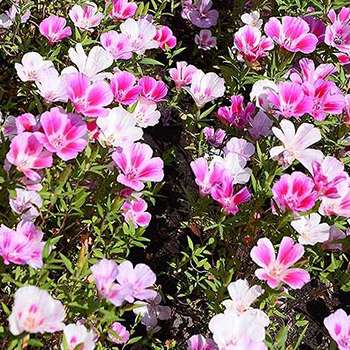 |
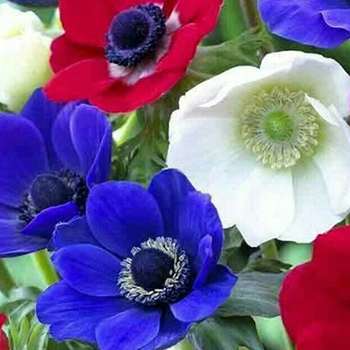 |
|
| Size | Up to 2 feet / 61 cm in height | Up to 1 foot / 30 ½ cm in height | Up to 3 feet / 91 ½ cm in height | Up to 1 ½ feet / 45 ¾ cm in height |
| Leaves | Blue-green, smooth, lacy, and pinnate | Lobed leaves covered by stiff hairs | Lance-shaped, slender, long | Basal leaves each divided into 9 leaflets |
| Stems | Hairless, covered in a thin layer of wax | Trailing | Erect | Erect, tall |
| Flowers: Color | Light yellow, bright orange | White, pink, lavender | Pink, purple, lavender; white center | Red, blue, white |
| Flowers: Shape | Cup-shaped | Cup-shaped | Cup-shaped | Cup-shaped |
While some plants have similarly shaped leaves, the single feature these plants in common is the flower shape and even there, there are helpful differences. The California Poppy is a distinctive plant.
Warning And Cautions
As with any plant-based remedy or preparation, one shouldn’t assume it is 100% safe because it is 100% natural. California Poppy is no exception, and there are cautions that come with it.
- Pregnant or breastfeeding women should avoid this plant
- People taking sedative medications should not use this herb
- You should stop using this herb two weeks before a scheduled surgery
Finally, if you have a medical condition, are on medication, or are unsure of the safety and suitability of California Poppy for you, consult your healthcare practitioner before using it.
You may also like:
 Vervain: The Medicinal Plant that Should be Part of Your Apothecary
Vervain: The Medicinal Plant that Should be Part of Your Apothecary
Erratic Blood Sugar? Never Eat This Veggie (Video)
Everything You Need to Know About Chicory

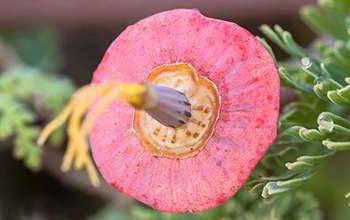
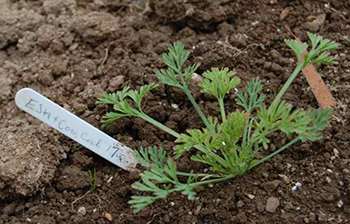
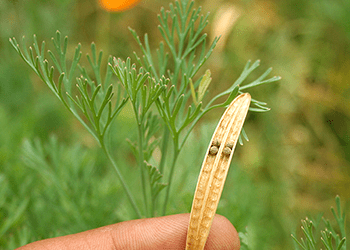
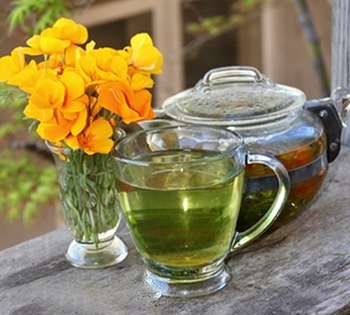
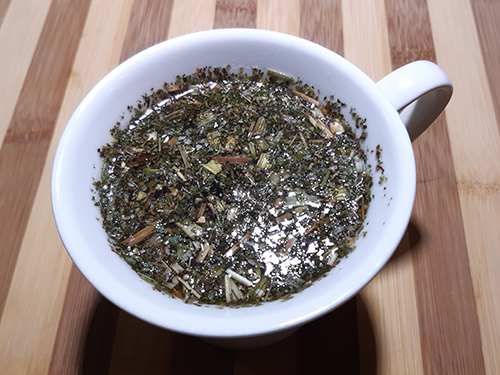
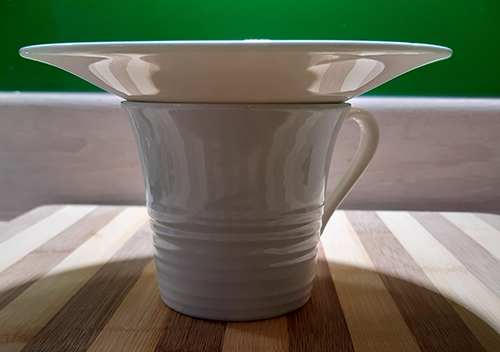
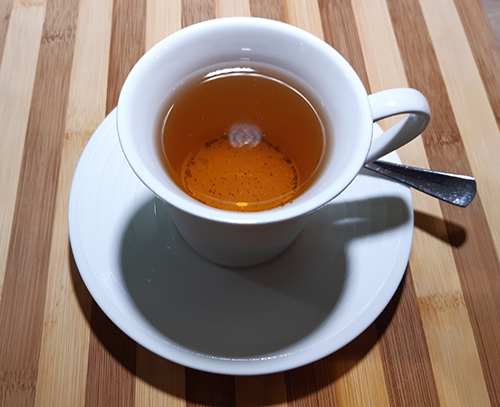
Very in depth article! I love these kinds of articles. You learn so much!
Hello this is a very informative article. I’m intrigued with trying to grow in Florida. I have a question a friend who want’s to use the remedy but is fearful due to her companies rug testing will this show up as use of Drugs?
Hi Frank,
Thank you for your comment.
Though the state of Florida is outside of California poppy’s usual growing range, Florida’s humid subtropical and tropical climates are well-suited for growing California poppy and other wildflowers.
California Poppy is a self-seeding perennial. Good companion plant to grasses and other flowers, a wild show of yellow and orange. Poppies prefer fast-draining soil and sunny exposure. Sow in fall or early spring by scattering the seed or disturbed soil or seedbed and pressing in firmly. For row crops, space rows 4 feet apart and 6-inch spacing within the row. Germination is in the fall or the early spring, with fast growth of the basal rosette, flowering to 18 inches.
Regarding the Drug test, although it is a distant cousin of the infamous opium poppy, the California poppy (Eschscholzia californica) is far less potent, opioid-free, and is widely used as a helpful supplement in natural health circles for temporary pain relief and a sense of overall calm. California poppy is not a true poppy so it is not habit-forming and should not give a false positive on drug tests.
However, to be on the safe side, avoid ingesting any poppy seed products at least 48 hours before taking a drug test.
God bless!
Is honey gathered from poppy safe?
Hi Domani.
Thank you for your comment.
California poppies don’t provide nectar for pollinators, just pollen, but they are still heavily visited by bumblebees, sweat bees, and mining bees, as well as the European honey bee.
God bless!
Would this have any effect on a urine drug test?
Hi Penny,
Although it is a distant cousin of the infamous opium poppy, California poppy (Eschscholzia californica) is far less potent, opioid-free, and is widely used as a helpful supplement in natural health circles for temporary pain relief and a sense of overall calm. California poppy is not a true poppy so it is not habit-forming and should not give a false positive on drug tests.
However, to be on the safe side, avoid ingesting any poppy seed products at least 48 hours before taking a drug test.
God bless!
Trying to grow this in Cyprus and fingers all crossed.
I have been growing this beautiful plant in my garden in Hereford UK for several years and we love its foliage and vibrant flower colours. Over the years colours have varied from bright yellow through dark orange and variegated orange tinged with red. We didn’t know about the beneficial effects until I read this excellent article, so will try some tea!
Hello I live in Italy and here we have Papaver rhoeas , I have heard it called corn poppy or common poppy. Can this be used as well in the same manner as the California poppy